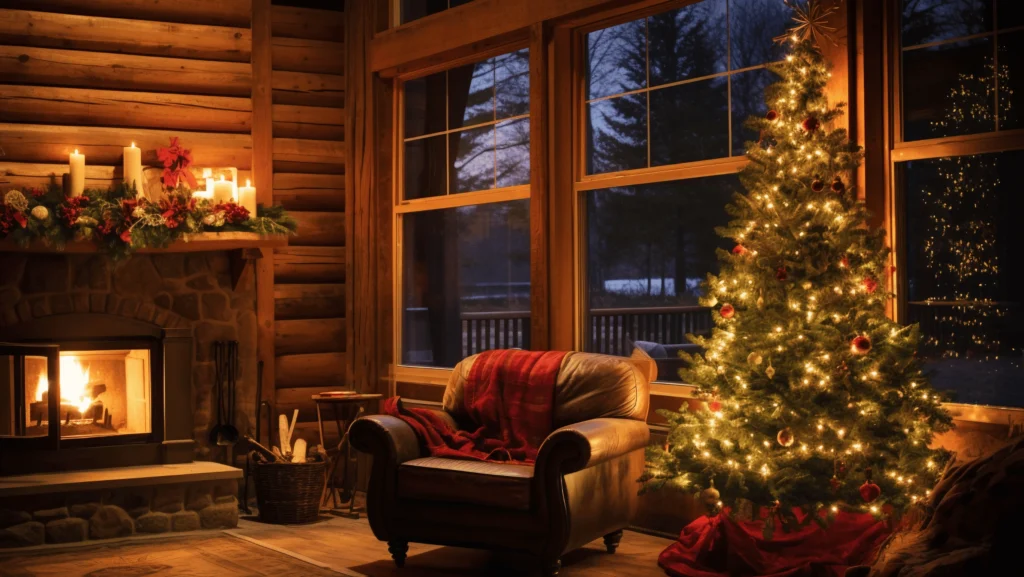Introduction
As winter approaches, the chill in the air becomes more pronounced, and keeping your home warm becomes a top priority. While staying cozy and warm is a necessity, high energy bills can make winter expenses daunting. Heating costs can quickly add up, and many homeowners find themselves spending far more than anticipated. However, keeping your home warm during the cold months doesn’t have to break the bank. With a few strategic changes and budget-friendly solutions, you can maintain a warm, comfortable home without draining your wallet. In this article, we’ll explore practical, cost-effective ways to keep your home warm this winter while saving energy and money.
1. Seal Drafts and Prevent Heat Loss
Why Sealing Drafts is Crucial
Drafts are one of the main culprits of heat loss in a home. Whether it’s through windows, doors, or walls, even small gaps can result in significant heat escaping. Sealing drafts ensures that warm air stays inside your home while cold air remains outside.
How to Seal Drafts
- Weather Stripping: Apply weather stripping around windows and doors to create a tight seal. It’s an affordable and quick solution.
- Caulk Gaps: Use caulk to seal small cracks around windows, doors, and walls. This can be a DIY job and is a cost-effective solution.
- Door Draft Stoppers: Place a draft stopper at the base of your doors to prevent cold air from seeping in. You can buy one at a hardware store or make one yourself using old blankets or pillows.
- Plastic Window Film: Apply plastic film to your windows as a temporary barrier. It’s inexpensive and helps retain heat inside the home.
2. Insulate Your Home Properly
Why Insulation is Key for Energy Efficiency
Good insulation keeps your home warm by minimizing the heat transfer between the interior and exterior. Insulating your home effectively can significantly reduce heating costs by preventing warm air from escaping.
Budget-Friendly Insulation Ideas
- Attic Insulation: The attic is a common source of heat loss. Adding insulation to your attic is a cost-effective way to retain warmth. Options like fiberglass insulation or foam boards work well.
- Wall Insulation: If your walls aren’t well insulated, consider adding spray foam or insulation boards to reduce heat loss.
- Rug and Carpet Solutions: Placing thick rugs or carpets on floors can provide extra insulation and retain heat.
3. Use Curtains and Window Treatments
Why Curtains Matter in Winter Heating
Windows are a major source of heat loss, but the right window treatments can help retain heat inside your home. Investing in window coverings can provide a barrier that prevents cold air from entering and warm air from escaping.
Cost-Effective Window Solutions
- Thermal Curtains: These curtains are designed to retain heat and block cold drafts. They are available at most home stores and are relatively affordable.
- Layered Curtains: Use multiple layers of curtains to increase insulation. Combine sheer curtains with thick drapes for maximum warmth.
- DIY Hacks: Use foam board insulation cut to fit your window size and place it behind curtains during extreme cold snaps.
4. Use Space Heaters Strategically
Why Space Heaters are a Budget-Friendly Heating Option
Space heaters are a cost-effective way to warm individual rooms without having to heat the entire house. This allows you to save money by focusing heating efforts where you need it most.
Types of Budget-Friendly Space Heaters
- Electric Space Heaters: Available in different sizes and capacities, electric heaters are affordable and energy-efficient for small to medium-sized spaces.
- Ceramic Heaters: These provide quick and efficient heating and are great for bedrooms and office spaces.
- Infrared Heaters: Infrared heaters are energy-efficient and provide direct, instant heat to specific areas.
Tips for Efficient Space Heater Use
- Positioning: Place heaters in the center of the room or near walls to distribute heat evenly.
- Safety First: Never leave heaters unattended and always follow manufacturer safety instructions.
- Energy Efficiency: Use programmable space heaters to control temperature and minimize energy consumption.
5. Utilize Your Ceiling Fans Wisely
Why Ceiling Fans Can Help in Winter
While ceiling fans are often associated with cooling in summer, they can also be useful in winter. Running ceiling fans in a clockwise direction pushes warm air downward, which helps distribute heat throughout the room more efficiently.
How to Use Ceiling Fans for Winter
- Adjust Fan Direction: Many ceiling fans have a switch on the motor housing to change direction. In winter, set the fan to rotate clockwise.
- Low-Speed Operation: Run your ceiling fan on a low-speed setting to gently circulate air without creating drafts.
6. Optimize Your Heating System
Why Maintenance and Efficiency Matter
Regular maintenance of your heating system ensures that it runs efficiently and effectively throughout the winter months. A well-maintained system consumes less energy and reduces overall heating costs.
Budget-Friendly Heating System Tips
- Clean or Replace Air Filters: Dirty air filters restrict airflow and make your system work harder. Clean or replace them monthly for optimal performance.
- Schedule a Heating Check-Up: Hire a professional technician to inspect and maintain your heating system before the winter season starts. This preventive maintenance can prevent costly repairs.
- Programmable Thermostats: Install a programmable thermostat to control your home’s temperature more efficiently. You can lower the temperature during the night or when no one is home, saving energy.
7. Use Rugs and Carpets for Extra Warmth
Why Rugs and Carpets Help Insulate Your Floors
Flooring, especially if it’s made of tile or wood, can be a significant source of heat loss. Placing rugs or carpets on floors provides a layer of insulation that keeps your home warmer.
Affordable Rug Solutions
- Thick Rugs: Choose rugs with a dense pile or wool material, as they provide better insulation.
- Layer Rugs: If you have thinner rugs, layer them on top of each other for extra warmth.
- DIY Options: Use old blankets or rugs strategically around entrances and high-traffic areas.
8. Embrace the Sun’s Natural Heat
Why Sunlight is a Free Source of Heat
During the day, take advantage of the sun’s natural warmth by allowing sunlight to enter your home. This free heat source can significantly reduce your reliance on artificial heating.
How to Maximize Sunlight
- Open Curtains During the Day: Open curtains and blinds in the morning to let sunlight in and close them as soon as the sun sets to retain heat.
- Use Reflective Surfaces: Placing mirrors strategically around your home can reflect sunlight into darker areas, enhancing the overall warmth.
9. Draft-Proof Your Doors and Windows
Why Draft-Proofing Helps Retain Heat
Draft-proofing your doors and windows is a simple and cost-effective way to prevent heat loss. This ensures that warm air remains inside your home, even on the coldest days.
Budget-Friendly Draft-Proofing Solutions
- Draft Guards: Use foam or rubber draft guards around the edges of doors.
- Window Insulation Tape: Apply window insulation tape to edges and seams to create a tight seal.
Conclusion
Keeping your home warm during winter doesn’t have to come with high costs. By implementing these budget-friendly solutions—from sealing drafts and adding insulation to using space heaters and taking advantage of the sun’s natural warmth—you can maintain a cozy home without putting too much strain on your wallet. A few simple changes and proactive strategies will ensure that your home remains warm, energy-efficient, and cost-effective.
Planning ahead, investing in small upgrades, and practicing regular maintenance will not only save money but also contribute to a more sustainable and energy-efficient home. With these budget-friendly tips, you can enjoy a warm winter while ensuring that your finances remain on solid ground.




